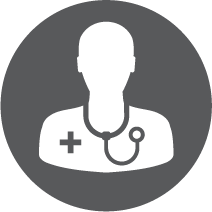If you are experiencing eye problems like blurry vision, blindness in one or both eyes, eye irritation, eye pain or swollen eyes, you need to visit an eye clinic. You might come across many eye specialist terms like opticians, optometrists and ophthalmologists. The eye specialist you are supposed to see is an optometrist.
Who Is an Optometrist?
An optometrist is an eye doctor whose main work is to help examine your eye symptoms and come up with a diagnosis. The diagnosis he or she makes has three outcomes:
- You need prescription eyeglasses or contact lenses — This means that you have an eye lens refractive disorder or error where your eyes do not end light correctly, leaving you either long- or short-sighted. The refractive error needs to be corrected using eyeglasses or contact lenses, which are designed by an optician based on the prescription provided by the optometrist.
- You need medication — This means you have an eye condition that can be treated using oral medication or eye drops. Depending on the condition and the expertise or skill level of the optometrist, he or she can prescribe the medication needed.
- You need to see an ophthalmologist — Some conditions are beyond the specialisation of your optometrist, especially those that need surgery. An optometrist cannot carry out surgery; you need to be referred to an ophthalmologist. The latter is more qualified and experienced at handling serious eye conditions that require surgery.
What Happens When You Visit an Optometrist Clinic?
What you might expect can be divided into three sections.
A Question and Answer Session
The optometrist asks you various questions that are mostly related to your symptoms. He or she may ask about your symptoms, when they started, and whether you have tried any remedies. The optometrist might also ask whether you have changed your diet or lifestyle in any way. He or she is trying to find reasons why you are experiencing your symptoms. therefore, be as detailed as possible when responding to the questions asked.
Physical Examination
After the question and answer session, you are asked to try and read a chart placed at a particular distance in front of you. It has letters and numbers of different sizes mainly used to find out whether you have a refractive error.
Afterward, you are asked to sit on one side of a particular piece of equipment that looks like a big microscope and the optometrist sits on the other end. The equipment gets a better image of your eye for better examination.
Diagnosis
When all tests are complete, the optometrist will have a diagnosis, which is treated using the outcomes mentioned above.
Share
